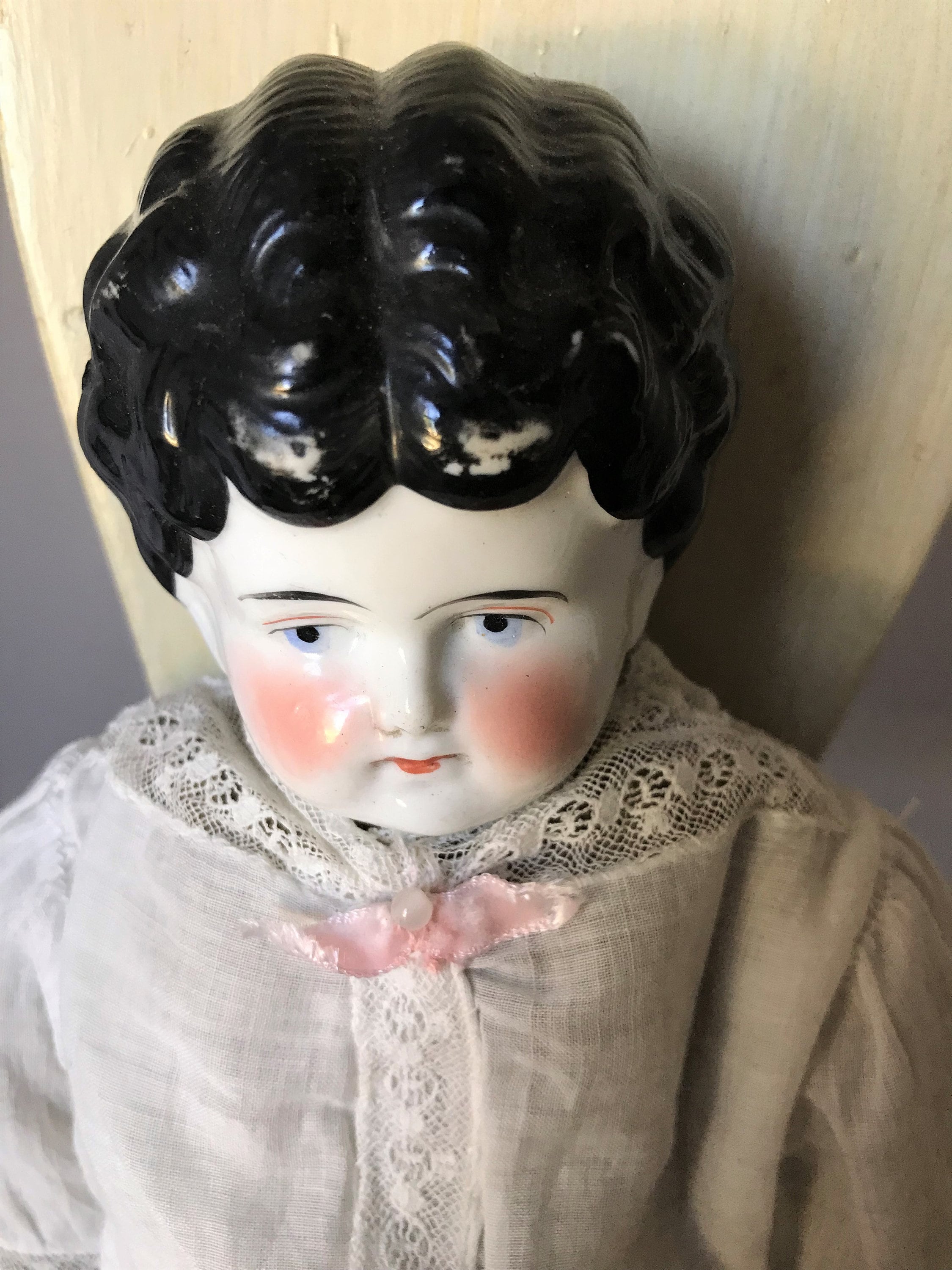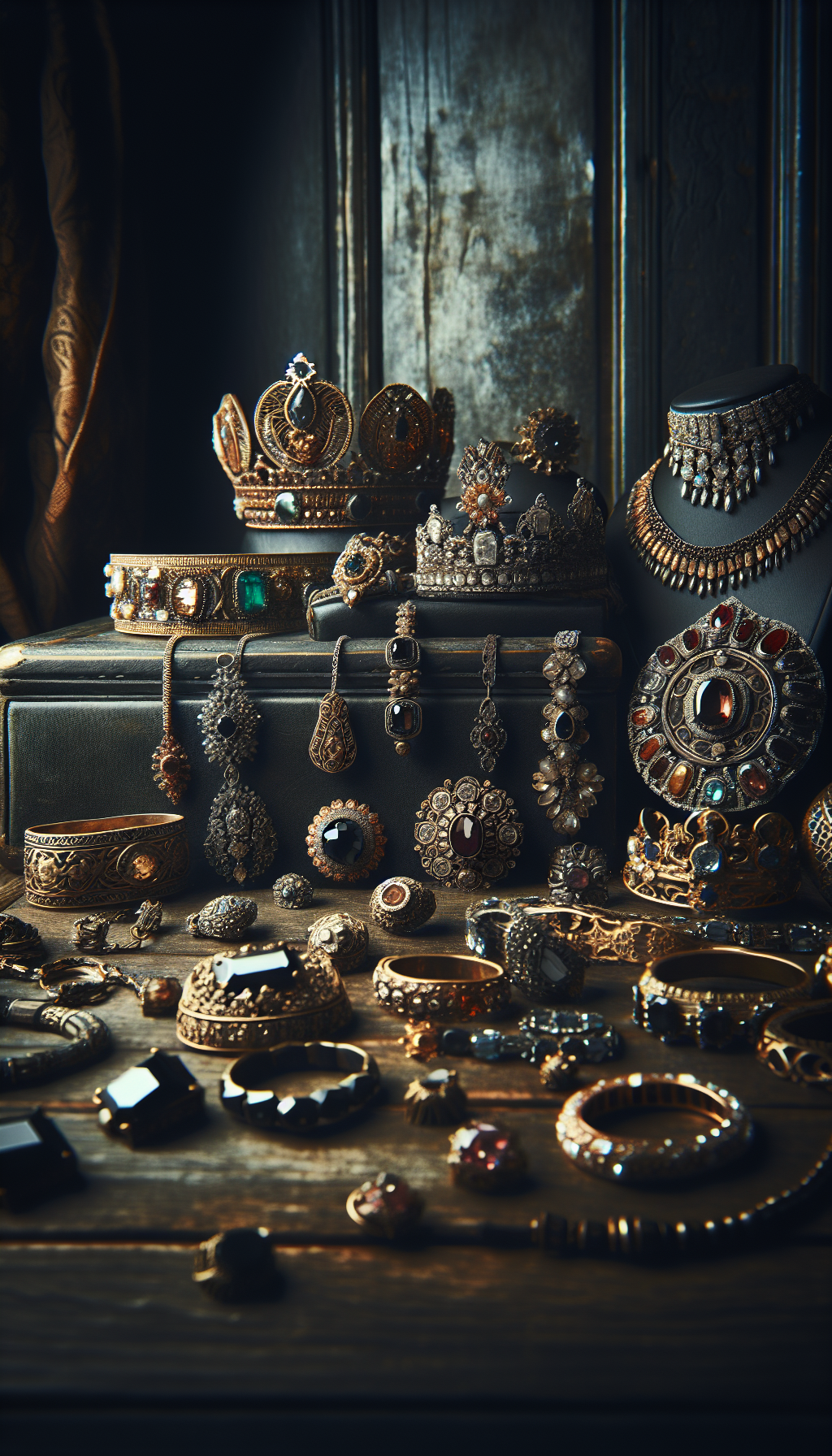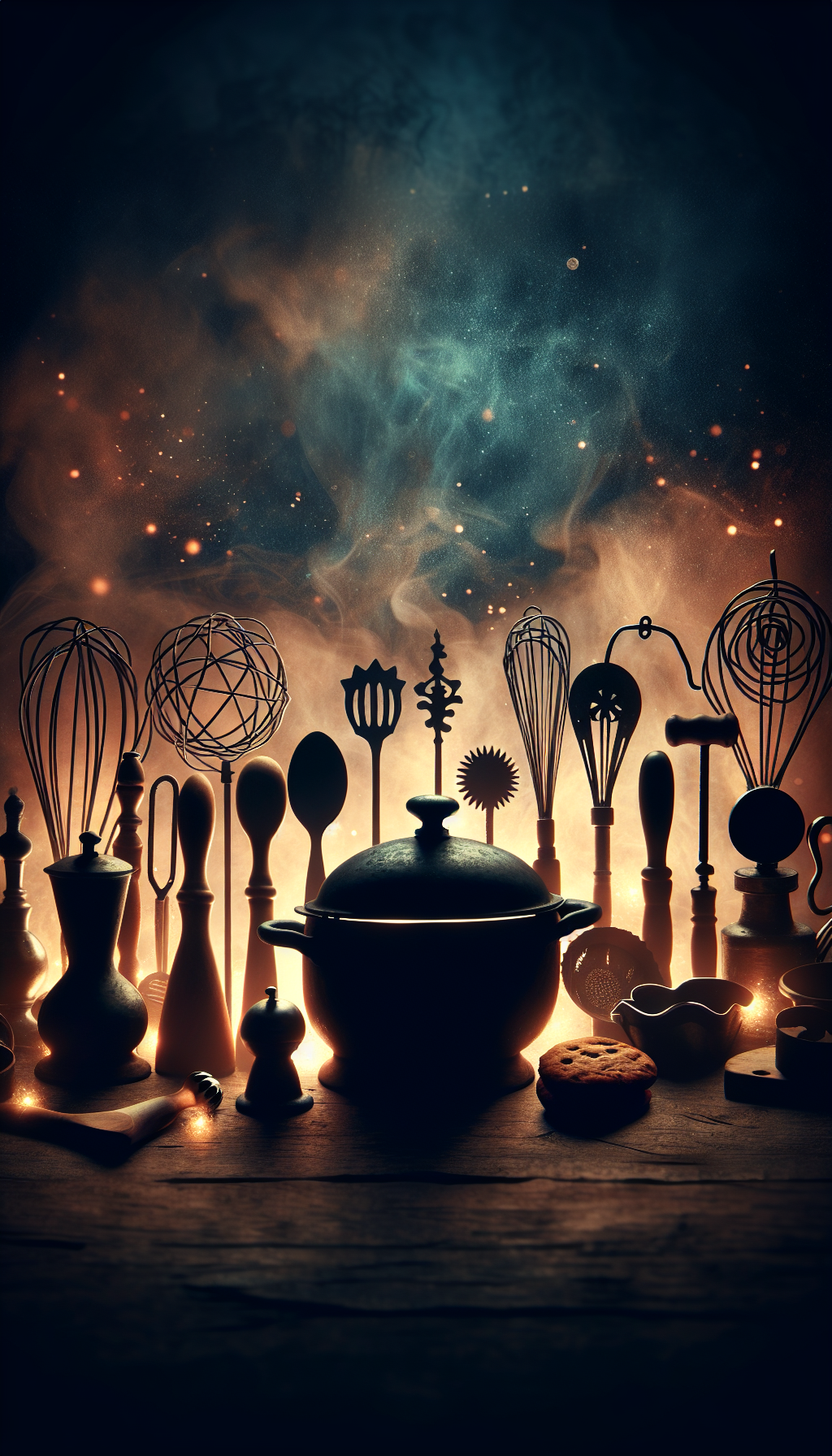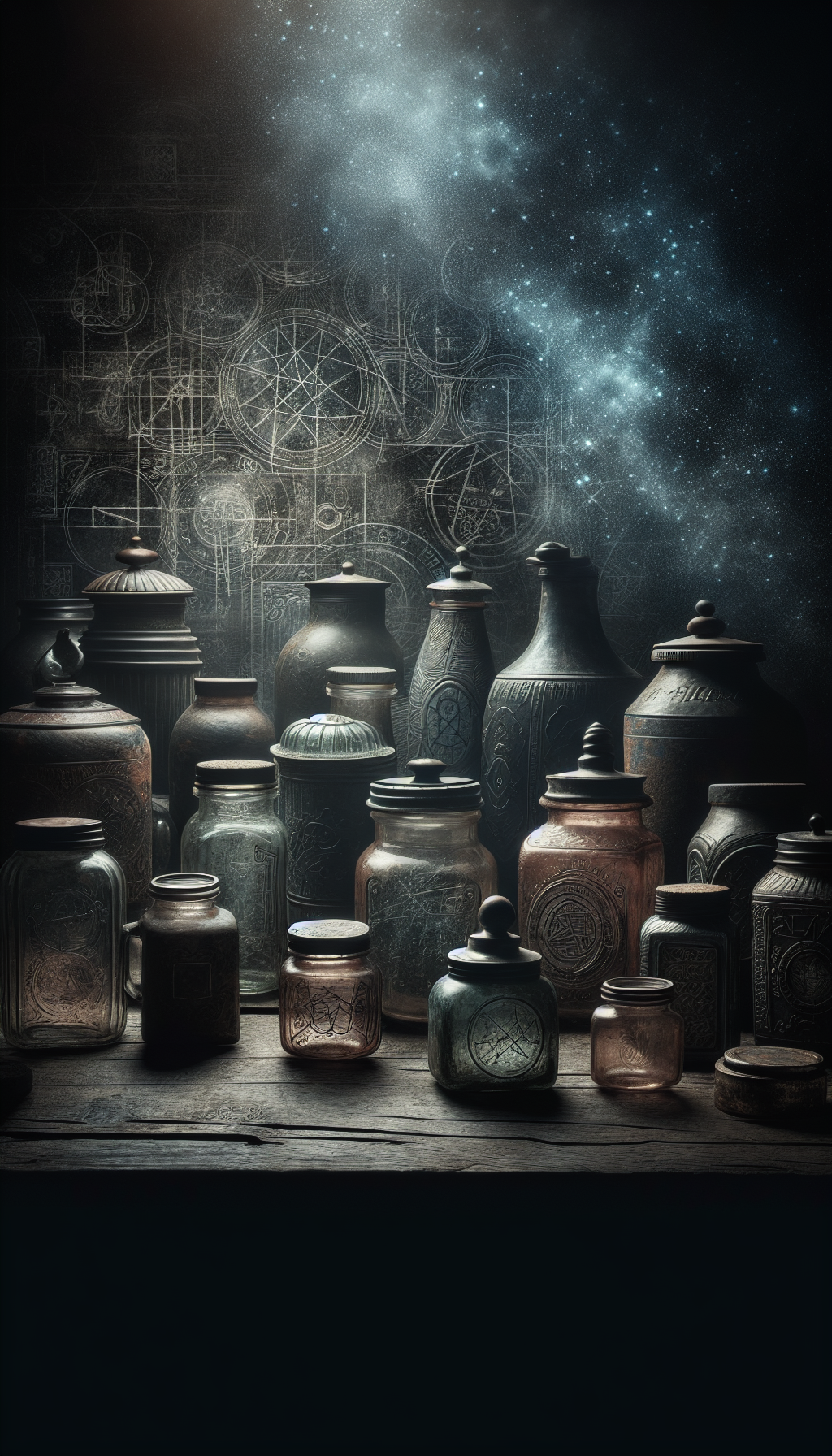Introduction to Antique Dolls (1800s-1920s)
This comprehensive guide will help you identify antique dolls from the 1800s-1920s period, understand what makes them valuable, and assess their worth in today’s collector’s market. Whether you’ve inherited a family heirloom, discovered an old doll at an estate sale, or are a serious collector looking to expand your knowledge, this resource will provide the essential information you need.
Evolution of Antique Dolls (1800s-1920s)
- 1800-1850
Early 19th Century Dolls
This period featured primarily wooden, wax, and papier-mâché dolls. Many had hand-painted features and cloth bodies with wooden or composition limbs. Notable types include wooden Grodnertal dolls and early china head dolls. - 1850-1880
China and Parian Dolls
China (glazed porcelain) and parian (unglazed porcelain) dolls dominated this era. These dolls often featured molded hair, painted features, and cloth bodies with china limbs. German and French manufacturers led production. - 1880-1900
The Golden Age of Bisque
Bisque dolls (unglazed porcelain) became the standard of quality. Companies like Jumeau, Bru, Steiner, and Kestner created dolls with incredibly realistic features, glass eyes, and mohair wigs. These remain among the most valuable antique dolls today. - 1900-1920
Transition to New Materials
While bisque remained popular, new materials like celluloid and composition emerged. Character dolls with expressive faces became fashionable. German manufacturers like Kämmer & Reinhardt and Simon & Halbig innovated with more realistic children's faces.
Key Materials Used in Antique Dolls (1800s-1920s)
Porcelain and Bisque
Porcelain dolls became popular in the mid-19th century, with bisque (unglazed porcelain) becoming the premium material by the 1880s. Bisque allowed for more realistic skin tones and delicate features than glazed china. The quality of the porcelain, the fineness of the mold, and the artistry of the painting all affect value.
Wood
Early 19th-century dolls often featured wooden components, particularly from the Grodnertal region of Germany. These wooden dolls can be quite valuable, especially when in original condition with hand-painted features.
Wax
Wax over composition or papier-mâché was used for elegant, realistic dolls, particularly in England. These dolls are rare today as they were fragile and easily damaged by heat. Well-preserved wax dolls can command high prices due to their rarity.
Cloth
Cloth dolls were common throughout this period, from simple homemade folk dolls to elaborate commercially-produced examples. Primitive cloth dolls from the 1800s with hand-drawn or embroidered faces are highly sought after by collectors.
Papier-Mâché
Used widely from the early to mid-19th century, papier-mâché was lightweight and versatile. These dolls often had cloth bodies with papier-mâché heads, hands, and feet.
Composition
A mixture of materials like sawdust, glue, and other binding agents, composition became popular in the early 20th century. It allowed for more mass production but was prone to cracking over time.
Celluloid
Introduced in the late 19th century, celluloid became more common in the 1910s and 1920s. While lightweight and able to create detailed features, it’s highly flammable and deteriorates over time, making well-preserved examples valuable.
Identifying Prominent Doll Makers (1800s-1920s)
French Doll Makers
French dolls from this period, particularly those made between 1860 and 1890, are often considered the pinnacle of doll artistry and typically command the highest prices.
Jumeau: Founded in the 1840s, Jumeau is renowned for their exquisite bisque dolls with perfect proportions and beautiful glass eyes. Their “Bébé Jumeau” models are among the most coveted antique dolls.
Bru: Established in 1866, Bru dolls are known for their refined modeling and extraordinarily lifelike features. Original Bru dolls in good condition can sell for over $10,000.
Steiner: Created innovative dolls with mechanisms for movement and sound. Their “Phonograph” speaking dolls are rare and valuable.
German Doll Makers
By the late 19th century, German manufacturers dominated the doll industry with high-quality production and innovative designs.
Kestner: One of the oldest German doll companies, known for their fine bisque heads and realistic features. Their “Gibson Girl” dolls are particularly sought after.
Simon & Halbig: Produced many of the bisque heads used by other doll assemblers. Their high-quality heads are marked with “S&H” and numbers indicating the mold.
Kämmer & Reinhardt: Pioneered the “character doll” with realistic children’s faces rather than idealized adult features. Their “Kaiser Baby” and numbered character series are highly collectible.
Armand Marseille: Created vast quantities of dolls, with their “Dream Baby” and “Floradora” models being particularly popular and moderately valuable today.
American Doll Makers
American manufacturers became more prominent in the early 20th century.
Martha Chase: Known for stockinette dolls with painted features that were designed to be washable and practical.
Izannah Walker: Created distinctive cloth dolls with oil-painted features, now extremely rare and valuable.
Emma Adams: Produced high-quality cloth dolls that are highly sought by collectors of American folk art.

Value Ranges by Doll Maker
Approximate market values for dolls in good to excellent condition (as of 2023)
</tbody>
</table>
How to Identify Key Features of Antique Dolls
Maker’s Marks
Many quality dolls have marks stamped or impressed into the back of the head, neck, or body parts. These marks typically include:
- The manufacturer’s name or initials (e.g., “Jumeau,” “K*R” for Kämmer & Reinhardt)
- Country of origin (“Germany,” “France,” “Made in Germany”)
- Mold numbers that identify specific models
- Size numbers indicating the doll’s dimensions
Look for these marks using a magnifying glass, as they may be small or partially worn. Reference books and online databases can help translate markings into maker identification.
Head Composition and Style
The material and craftsmanship of the head is crucial for identification:
- Bisque quality varies from fine, porcelain-like finishes to coarser, grainy surfaces
- Glazed china has a shiny finish, while bisque is matte
- Examine mold lines, which can indicate manufacturing techniques and periods
- Check for hand-painted features versus decals (later and less valuable)
Eyes
The eyes can reveal much about a doll’s age and quality:
- Fixed glass eyes: Common in high-quality French and German dolls
- Paperweight eyes: Glass eyes with a flat back and convex front
- Sleep eyes: Eyes that close when the doll is laid down (mechanism inside the head)
- Painted eyes: More common in earlier or less expensive dolls
Body Construction
Bodies varied considerably during this period:
- All-bisque: Entirely made of bisque porcelain, usually small (3-12 inches)
- Kid leather: High-end dolls often had kid leather bodies with bisque limbs
- Cloth: Various materials from fine fabrics to canvas, sometimes with internal wire or cotton batting
- Jointed composition: Bodies with jointed arms and legs, often with a bisque head
- Ball-jointed: Sophisticated body construction allowing for posing
Hair
Hair type and application can help with dating and valuation:
- Molded hair: Early china dolls often had hair molded into the porcelain
- Applied mohair or human hair: Higher-quality dolls had separately applied hair
- Wigs: Often made of human hair, mohair, or sheep’s wool
- Wig construction: Hand-sewn on net or cloth bases for premium dolls
Clothing
Original clothing significantly increases a doll’s value:
- Look for hand-stitching and period-appropriate fabrics
- Check for manufacturer’s labels in clothing
- Examine for appropriate underwear, shoes, and accessories
- Note that many dolls have had clothing replaced over the years

Antique Doll Market Statistics
Factors That Affect Antique Doll Values
Manufacturer and Rarity
The maker is often the primary value driver, with French and certain German manufacturers commanding the highest prices. Limited production models, experimental designs, and dolls from smaller workshops tend to be more valuable than mass-produced examples.
Condition
Condition dramatically impacts value, with mint or near-mint dolls sometimes worth ten times more than the same model with significant damage.
Condition Assessment Checklist
Use this checklist to evaluate your antique doll's condition
- No cracks, chips, or hairlines in the head
- Original glass eyes in good condition (not cloudy or loose)
- Original wig or molded hair intact and in good condition
- Original body with no significant repairs or replacements
- Original finish without repainting or touch-ups
- Original clothing or appropriate period garments
- Limbs and joints in working order
- Clear maker's marks
- Original accessories present (shoes, socks, hats, etc.)
- No unpleasant odors or signs of moisture damage
Size
Generally, larger dolls from the same manufacturer and period are more valuable than smaller ones, with some exceptions for miniature dolls of extraordinary quality.
Originality
Dolls with all original components—head, body, wig, clothing, shoes, and accessories—command premium prices. Replaced parts significantly reduce value, especially if modern materials were used in restoration.
Provenance
Documented history of ownership can dramatically increase value, particularly if a doll has connections to notable individuals or historical events. Original sales receipts, photographs of the doll with original owners, or documentation of exhibition history all enhance provenance.
Artistic Quality
The artistic merit of facial painting, modeling, and overall aesthetic appeal matters significantly. Dolls with exceptional facial painting, lifelike expressions, and fine details command higher prices.
Market Trends
Collector interests shift over time. Currently, character dolls, early French fashion dolls, and rare American cloth dolls are experiencing strong market demand.
:max_bytes(150000):strip_icc()/sale-of-old-dolls-at-a-flea-market-580105152-5abbc9dc875db90037a86700.jpg)
Recent Notable Antique Doll Auction Sales
High-profile sales from major auction houses (2020-2023)
| Category | Price | Notes |
|---|---|---|
| Jumeau (French) | $5,000 - $25,000+ | Highest values for perfect condition with original clothing |
| Bru (French) | $8,000 - $30,000+ | Exceptionally rare models can exceed $100,000 |
| Kestner (German) | $1,500 - $8,000 | Gibson Girl models command premium prices |
| Kämmer & Reinhardt (German) | $2,000 - $15,000 | Character dolls are most valuable |
| Armand Marseille (German) | $300 - $1,500 | Common models in lower range, rare examples higher |
| Simon & Halbig (German) | $800 - $5,000 | Larger sizes and better condition command higher prices |
| Izannah Walker (American) | $15,000 - $75,000+ | Extremely rare with only about 170 known examples |
| Cloth Folk Dolls (Various) | $150 - $2,500 | Primitive examples with provenance can be valuable |
</tbody>
</table>
Tips for Authenticating Antique Dolls
Material Analysis
Authentic antique bisque has specific characteristics different from modern porcelain:
- Examine the bisque under magnification for a fine, slightly grainy texture
- Authentic antique bisque often has a warm tone compared to the stark white of reproductions
- Look for appropriate crazing (fine networks of tiny cracks) consistent with age
Construction Methods
Period-appropriate construction techniques include:
- Hand-sewn cloth bodies with stitching using cotton or linen thread
- Kid leather bodies with tiny, closely spaced stitches
- Paper labels inside cloth bodies rather than printed fabric tags
- Wooden pegs or cotton string to attach limbs rather than plastic or nylon components
Wear Patterns
Authentic antique dolls show specific patterns of wear:
- Natural wear on high points and edges
- Appropriate patina consistent with age
- Fading of painted features that follows a logical pattern based on handling
- Discoloration or staining consistent with age and materials
Expert Consultation
When investing in high-value dolls:
- Consult with reputable doll dealers, appraisers, or auction house specialists
- Consider joining doll collector clubs where expertise is shared
- Attend major doll shows where experts can examine items in person
- For significant purchases, consider requesting a formal written authentication
Documentation Research
Research can help verify authenticity:
- Cross-reference maker’s marks with established reference guides
- Compare with examples in museum collections
- Research original catalog illustrations from the period
- Examine the doll under UV light, which can reveal modern materials
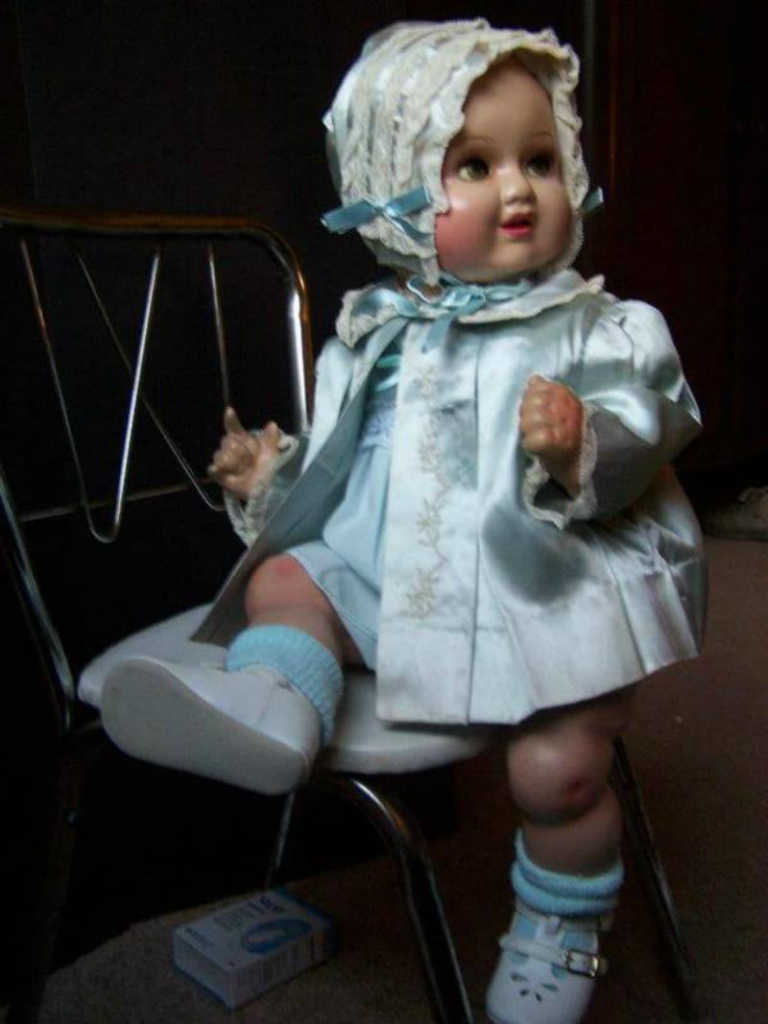
Regional Variations in Antique Dolls
French Dolls
French dolls, particularly from Paris, set the standard for luxury dolls in the 19th century. Their characteristics include:
- Exceptionally fine bisque with a creamy, translucent quality
- Sophisticated face modeling with nuanced expressions
- Elegant proportions and graceful poses
- Elaborate costuming using fine fabrics and trimmings
- Swivel necks on kid leather bodies
- Beautiful paperweight eyes with realistic irises
French fashion dolls (poupées) were used to display the latest Parisian fashions, while French bébés (baby or child dolls) captured the innocence of childhood with remarkable artistry.
German Dolls
German manufacturers produced the largest quantity of dolls during this period, ranging from basic models to high-quality pieces:
- More standardized production techniques
- Slightly harder bisque with a wider range of quality
- More varied body types, including composition and celluloid
- Strong focus on character dolls in the early 20th century
- Often marked with both mold numbers and size
- Innovative mechanical features and sound-producing mechanisms
The Thuringia region of Germany became the center of doll production, with numerous factories producing components that were often assembled by smaller workshops and home workers.
American Dolls
American dolls from this period reflect both folk traditions and emerging industrial production:
- Stronger focus on practical, playable dolls
- Distinctive cloth doll traditions with regional variations
- Patent-head dolls with waterproof composition features
- Emphasis on washable, hygienic designs by the early 20th century
- Use of domestic materials like cotton, linen, and locally sourced clay
- Often made for the middle-class market rather than luxury buyers
English Dolls
English dolls have distinctive characteristics that set them apart:
- Excellence in wax dolls with remarkably lifelike features
- Poured wax over composition with inserted glass eyes
- Strong parian (unglazed porcelain) doll tradition
- Often dressed in detailed versions of typical English clothing
- Less elaborate than French dolls but finely crafted
- Wooden dolls with distinctive carved features
Japanese Dolls
By the early 20th century, Japanese manufacturers entered the export market with:
- Distinctive bisque with a slightly different composition
- Often marked “Japan” or “Made in Japan” (after 1921)
- Characteristic face painting styles
- Adaptation of Western doll styles with subtle Japanese aesthetic influences
- Competitive pricing that undercut European manufacturers

Caring for Antique Dolls
Display Recommendations
How and where you display antique dolls significantly impacts their preservation:
- Position dolls away from direct sunlight, which can fade fabrics and damage materials
- Maintain stable temperature and humidity (ideally 65-70°F with 45-55% relative humidity)
- Use museum-quality display cases with UV-filtering glass when possible
- Support dolls with proper stands designed for antiques, avoiding stress on fragile components
- Rotate displayed dolls periodically to minimize light exposure
- Keep dolls away from heating vents, fireplaces, and areas with cooking fumes
Cleaning Guidelines
Cleaning antique dolls requires extreme caution:
- Never immerse bisque, china, or composition parts in water
- Clean bisque with a soft, dry makeup brush to remove loose dust
- For more thorough cleaning, use a slightly dampened cotton swab with distilled water only
- Test any cleaning method on an inconspicuous area first
- Clean glass eyes very gently with a dry cotton swab
- Consult a professional conservator for valuable or severely soiled dolls
- Avoid all commercial cleaners, solvents, and polishes
Storage Best Practices
Proper storage is crucial for dolls not on display:
- Wrap dolls in acid-free tissue paper, never in newspaper or colored tissue
- Store in acid-free boxes in a climate-controlled environment
- Place cushioning materials between limbs to prevent pressure marks
- Remove or carefully pad metal accessories that might cause corrosion or staining
- Inspect stored dolls periodically for pest activity or condition changes
- For cloth elements, consider including acid-free silica gel packets to absorb excess moisture
- Store wigs and hairpieces shaped on appropriate forms to maintain style
Conservation vs. Restoration
Understanding the difference between conservation and restoration is important:
- Conservation aims to stabilize and preserve the doll in its current condition
- Restoration attempts to return the doll to a previous appearance
- Conservation typically preserves more value for collectors than extensive restoration
- Minor, reversible repairs by specialists can stabilize damaged components
- Document any restoration work with before and after photographs
- Only use conservators experienced specifically with antique dolls

Where to Buy and Sell Antique Dolls
Specialized Auction Houses
Auction houses dedicated to dolls and toys offer the advantage of knowledgeable staff and targeted buyer audiences:
- Theriault’s: The leading specialty auction house for antique dolls, hosting multiple auctions annually
- Morphy Auctions: Regularly features high-quality antique dolls in their toy and doll auctions
- Skinner, Inc.: Known for carefully curated doll and toy auctions with expert cataloging
Major international auction houses like Christie’s and Sotheby’s occasionally include exceptional antique dolls in their decorative arts sales, potentially reaching broader collector audiences.
Doll Shows and Conventions
Doll shows provide opportunities for direct interaction with dealers and collectors:
- The United Federation of Doll Clubs (UFDC) annual convention hosts a major sales floor
- The Antique and Collectible Doll Show and Sale circuit includes events across North America
- European doll markets like the Münchner Spielzeugmarkt (Munich Toy Market) feature rare antique dolls
- Regional collector club shows often have knowledgeable dealers with fairly priced merchandise
Shows allow for in-person inspection and immediate purchase decisions.
Online Marketplaces
Digital platforms have expanded buying and selling options:
- Specialized doll sites: Ruby Lane and Doll Shop specializing in quality antique dolls
- Auction platforms: LiveAuctioneers and Invaluable for online bidding at established auctions
- General platforms: eBay and Etsy for wider reach, though requiring more buyer caution
- Dealer websites: Many established doll dealers maintain online inventories with secure purchasing
When buying online, request detailed condition reports, multiple photos, and clear return policies.
Antique Dealers and Shops
Traditional brick-and-mortar options include:
- Specialized antique doll shops, increasingly rare but offering curated selections
- General antique malls and shops, where unexpected finds may occur
- Estate liquidation companies, particularly for family collections being dissolved
- Antique shows with vetted dealers who specialize in quality dolls and toys
Private Sales
Direct collector-to-collector transactions often occur through:
- Doll club memberships and networking
- Collector forums and social media groups
- Word-of-mouth referrals among serious collectors
- Advertisements in collector publications
These transactions can offer good value for both parties by eliminating middleman fees.
Essential Antique Doll Resources
The United Federation of Doll Clubs
Membership organization providing educational resources, events, and networking opportunities for doll collectors and enthusiasts.
Theriault's Doll Auctions
Leading auction house specializing in antique dolls, with detailed catalogs and price archives valuable for research.
1stDibs Antique Doll Collection
Curated marketplace featuring high-quality antique dolls from reputable dealers with detailed descriptions and photographs.
Westland London - Antique Doll Identification Guide
Comprehensive guide to identifying and valuing antique dolls, with detailed information about makers, materials, and market trends.
The Spruce Crafts - Antique Doll Price Guide
Reference guide with pricing information for various types of antique dolls, updated regularly to reflect current market conditions.
Ruby Lane Dolls & Bears
Online marketplace specializing in quality antiques including a substantial selection of verified antique dolls from reputable sellers.
Invaluable - Antique Porcelain Dolls Guide
Detailed article explaining the history, identification, and valuation of antique porcelain dolls with expert insights.
HistoryOfDolls.com
Educational website covering the comprehensive history of dolls, with specific sections dedicated to antique porcelain and bisque examples.
Common Questions About Antique Dolls (1800s-1920s)
How do I find out what my old dolls are worth?
To determine the value of your antique doll:
- Identify the manufacturer by checking for marks on the head, body, or neck
- Assess the condition thoroughly, noting any damage, repairs, or replaced parts
- Research comparable sales through auction records, price guides, and collector references
- Consult specialists such as appraisers, auction house experts, or knowledgeable dealers
- Consider online resources like completed eBay listings, auction archives, or specialized doll valuation forums
For valuable dolls, consider getting a professional appraisal from a certified appraiser who specializes in antique dolls. The Antique & Collectible Doll Appraisers Association (ACDAA) can provide referrals to qualified appraisers.
What is the best way to sell antique dolls?
The best selling method depends on your doll's value, your timeline, and your comfort with different selling platforms:
High-value dolls ($1,000+): Consider specialized doll auctions like Theriault’s or established auction houses for maximum exposure to serious collectors
Mid-range dolls ($200-$1,000): Online platforms like Ruby Lane, eBay, or Etsy can be effective, but require good photographs and detailed descriptions
Entry-level antiques (Under $200): Local sales through doll clubs, antique malls, or Facebook Marketplace may avoid shipping complications
For collections, auction houses often provide the most efficient solution. For individual dolls, direct sales to collectors through specialty forums or doll club connections may yield better prices but require more effort on your part.
Which antique dolls are worth the most money?
The most valuable antique dolls from the 1800s-1920s period generally include:
Rare French fashion dolls by Huret, Rohmer, or early Jumeau (pre-1880) can sell for $20,000-$100,000+
Early character dolls by Kämmer & Reinhardt, especially models 101, 102, and 107, often fetch $10,000-$30,000
Rare Bru dolls, particularly the Bru Jne series with original costumes, regularly achieve $15,000-$50,000
American cloth dolls by Izannah Walker, extremely rare with only about 170 known examples, can sell for $15,000-$75,000
All-bisque mignonettes by French makers with original trousseaux (wardrobes) range from $5,000-$15,000
These values assume excellent condition with original components. The very highest prices (over $100,000) are typically paid for dolls with exceptional provenance, complete original wardrobes, or extreme rarity.
How can I tell if my porcelain doll is antique or a reproduction?
To distinguish genuine antique porcelain dolls from modern reproductions:
Examine the markings: Antique dolls have impressed or incised marks, while reproductions often have painted or stamped marks. Research the specific marking format for the purported maker.
Check the material: Authentic antique bisque has a distinctive feel—slightly rough, porous, with a warm tone. Reproductions often use modern, smoother porcelain with a colder white appearance.
Inspect construction details: Look at how the head attaches to the body, the stringing method, and the materials used. Modern reproductions often use plastic components, machine stitching, or synthetic fabrics.
Assess wear patterns: Antique dolls show natural aging and wear consistent with their purported age. Reproductions may have artificially distressed or aged elements.
Examine under magnification: Use a loupe or magnifying glass to check for modern painting techniques, machine-made lace, or synthetic fibers in clothing.
When in doubt, consult with a doll expert or appraiser who specializes in antique dolls.
Are antique cloth dolls valuable?
Yes, certain antique cloth dolls can be extremely valuable, particularly those from the 19th century. Key factors affecting cloth doll values include:
Maker: Dolls by recognized artists like Izannah Walker, Martha Chase, or Emma Adams command premium prices
Age: Earlier examples, particularly pre-Civil War American cloth dolls, are highly sought after
Condition: Original painted features without significant wear or repainting are crucial
Folk art quality: Primitive, one-of-a-kind handmade dolls with artistic merit can be valuable even without a known maker
Historical significance: Dolls with documented history, especially connections to historical events or notable families
While early handmade cloth dolls can sell for thousands of dollars, mass-produced cloth dolls from the early 20th century typically range from $50-$500 depending on condition and maker. The market for folk art cloth dolls has been particularly strong in recent years.
What were German bisque dolls from the 1800s-1920s typically worth when new?
During their original period of production (1860s-1920s), German bisque dolls varied widely in price depending on quality, size, and features:
High-end brands like Kestner, Simon & Halbig, and Kämmer & Reinhardt’s finest models could cost $5-$25 when new (equivalent to approximately $150-$750 in today’s currency)
Mid-range dolls typically sold for $2-$10 (roughly $60-$300 today)
Basic models were priced at $0.50-$3 (approximately $15-$90 today)
Larger dolls commanded higher prices, as did those with more elaborate features like sleep eyes, multiple costumes, or jointed bodies. Department store catalogs from the period show that a quality German bisque doll represented a significant purchase for most families, often marketed as Christmas or special occasion gifts.
By comparison, the finest French dolls often cost two to three times more than their German counterparts, placing them firmly in the luxury category.
Conclusion: The Enduring Appeal of Antique Dolls
These beautiful artifacts provide tangible connections to childhood experiences across generations and offer insights into the social history, fashion trends, and manufacturing innovations of their time. From the exquisite artistry of French fashion dolls to the folk art charm of early American cloth dolls, each piece represents both the technological capabilities and aesthetic sensibilities of its era.
For collectors, the thrill of the hunt—finding that rare example, researching its origins, and preserving it for future generations—continues to drive passion for these historical treasures. Whether your interest lies in building a museum-quality collection or simply appreciating the nostalgic charm of these antique companions, understanding their history, materials, and market value enhances the collecting experience.
As with many areas of antique collecting, knowledge is your most valuable tool. By developing expertise in identification, authentication, and valuation, you can make informed decisions whether buying, selling, or simply preserving these fragile connections to the past.
The market for quality antique dolls remains strong, with exceptional examples continuing to set auction records. Yet even more modest dolls can provide historical interest and aesthetic pleasure, making antique doll collecting accessible at various price points.
As you explore the fascinating world of antique dolls from the 1800s-1920s, remember that each doll carries its own unique story—of the craftspeople who created it, the children who loved it, and the collectors who preserved it. By understanding and appreciating these stories, we help ensure that these remarkable creations continue to be valued and protected for generations to come.
Get a Professional Appraisal
Unsure about your item’s value? Our certified experts provide fast, written appraisals you can trust.
- Expert report with photos and comps
- Fast turnaround
- Fixed, upfront pricing
No obligation. Secure upload.
| Item | Price | Date | Auction House |
|---|---|---|---|
| French Bisque Bébé Jumeau, Size 14 | $18,500 | March 2022 | Theriault's |
| Rare Bru Jne 13 with Original Costume | $28,500 | January 2023 | Sotheby's |
| Kämmer & Reinhardt Model 107 Character Doll | $12,700 | November 2021 | Christie's |
| Izannah Walker Cloth Doll, c.1865 | $22,800 | July 2022 | Skinner |
| Early Kestner Bisque Child Doll | $6,500 | October 2022 | Morphy Auctions |
